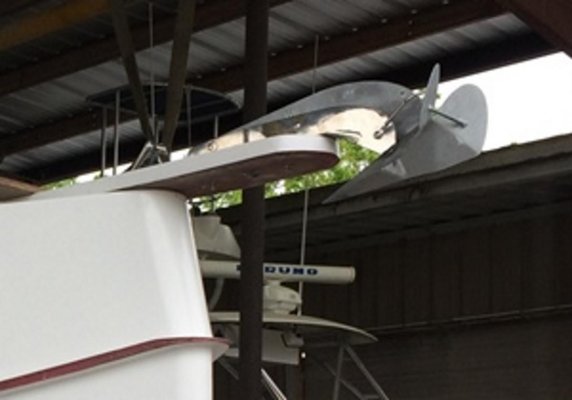I thought I would start a new thread here for those of us with smaller and/or lighter weight boats, regarding our ground tackle.
This article was very illuminating for me, since we will soon have delivery of our new boat, which is 36' in length with a 10'6" beam and rather lightweight (6,000 lbs unloaded & b4 engines). The author points out that he is talking about boats in the 10m range, so this may be also applicable to folks who own the Camano Troll, the Albin 28-32' and the Prairie 29 style of boats.
After reading ALL of the threads on anchors and anchoring (whew!), this article clarified for me that we should be going with a heavier anchor and a short length of chain. Our first trip in the TT35 will be half the Loop, from St. Petersburg, FL to Cleveland, OH. We plan to utilize anchorages as much as possible.
Before I discuss this with Hubby Dan, any thoughts? Flame suit on.
- from TF user what barnacles, posting in the thread "A new use for your bow eye"Interesting article from the rocna guy.
Catenary & Scope In Anchor Rode: Anchor Systems For Small Boats
- Peter Smith, from linked article aboveit is a widespread myth that all boats should carry as much chain as possible....
In fact, we shall see that catenary rarely offers much benefit which is truly worthwhile, and any unnecessary extra weight of the chain is often far better invested in other elements of the anchoring system....
The conclusion is that “all chain” is not particularly desirable in terms of performance, and a considerable amount of weight may be saved without detrimentally affecting the anchor....
Taking a few kilograms of weight out of the chain and putting it into the anchor results in a significant increase in holding power.
This article was very illuminating for me, since we will soon have delivery of our new boat, which is 36' in length with a 10'6" beam and rather lightweight (6,000 lbs unloaded & b4 engines). The author points out that he is talking about boats in the 10m range, so this may be also applicable to folks who own the Camano Troll, the Albin 28-32' and the Prairie 29 style of boats.
After reading ALL of the threads on anchors and anchoring (whew!), this article clarified for me that we should be going with a heavier anchor and a short length of chain. Our first trip in the TT35 will be half the Loop, from St. Petersburg, FL to Cleveland, OH. We plan to utilize anchorages as much as possible.
Before I discuss this with Hubby Dan, any thoughts? Flame suit on.






